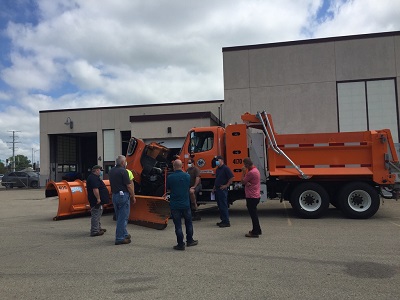

Our Climate Action Plan identifies a series of outcomes lead to significantly reducing emissions over the next decade. But having a plan is just the beginning. The heart of the challenge is acting on the goals outlined in the Climate Action Plan and in catalyzing action across the county to meet these ambitious goals.
Dane County has two sets of climate goals, addressing both internal government operations and countywide emissions:

On our internal operations goal that county facilities, fleet and land operations be carbon neutral by 2030, we have already cut emissions by more than 60%. Much of this progress was tied to achieving 100% renewable offset electricity in 2023.

Dane County government is making progress on its goal to be carbon neutral by 2030! Through thoughtful management of energy use in our buildings, vehicles, as well as proactive land management we have already cut emissions by more than 60%. Much of this progress was tied to achieving 100% renewable offset electricity in 2023.